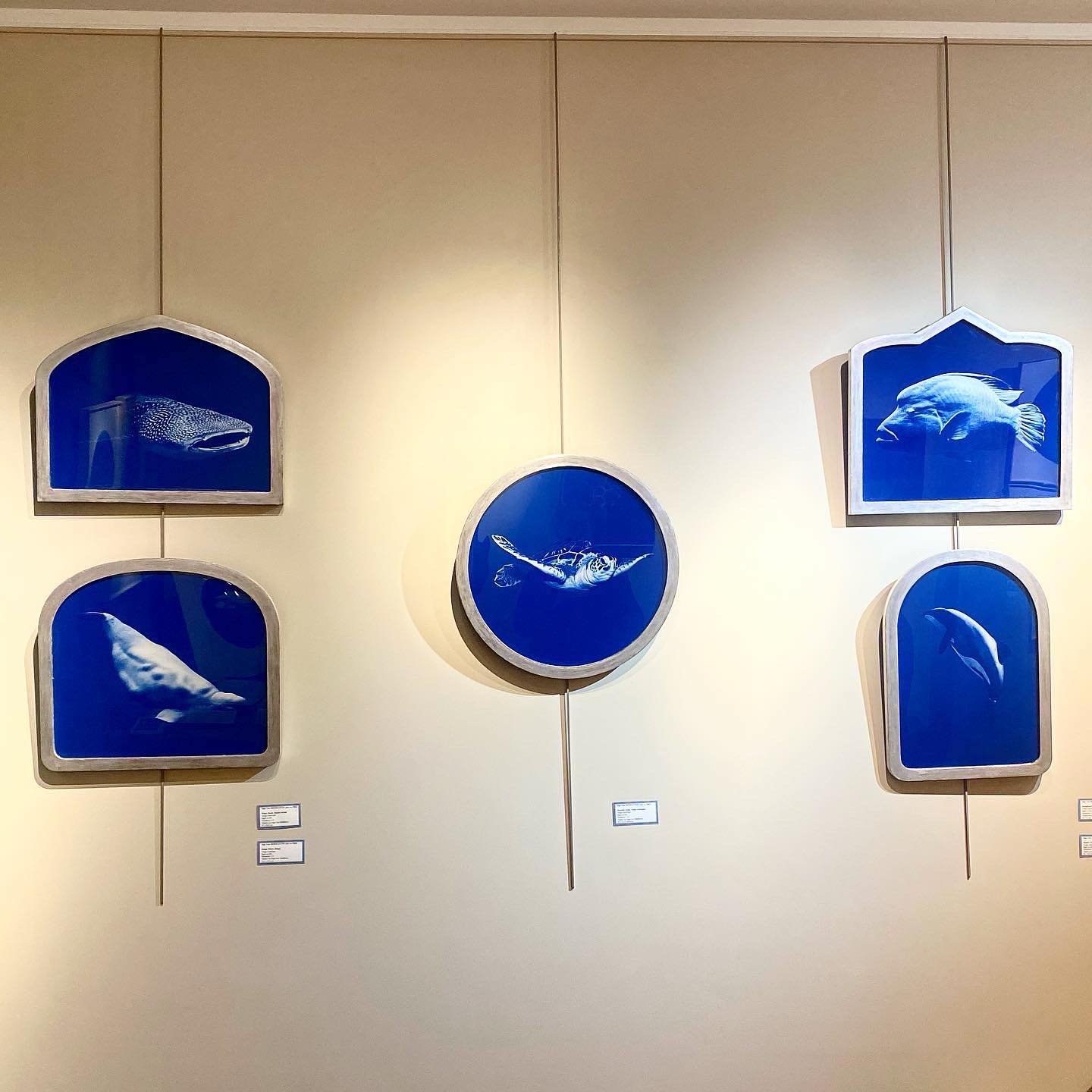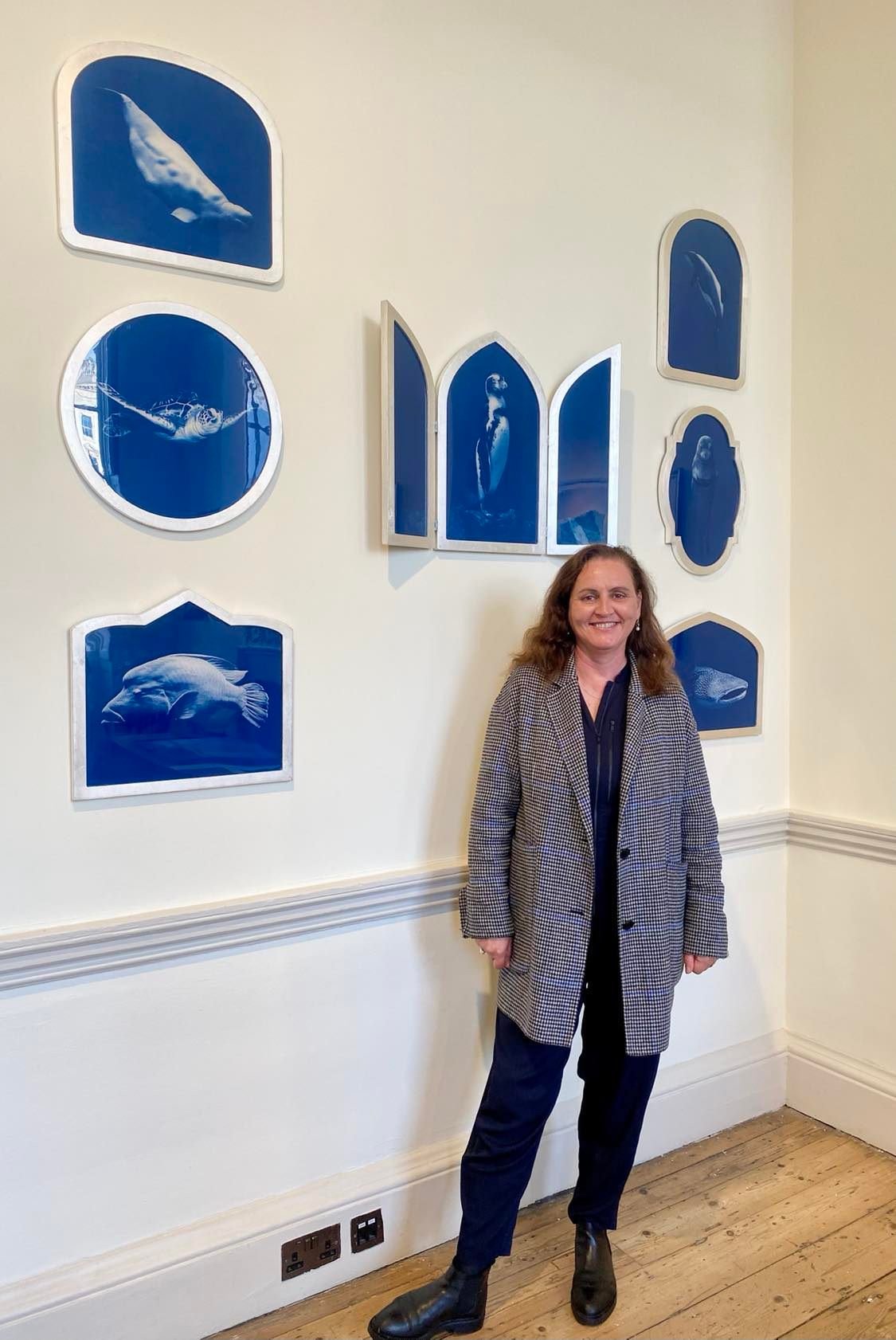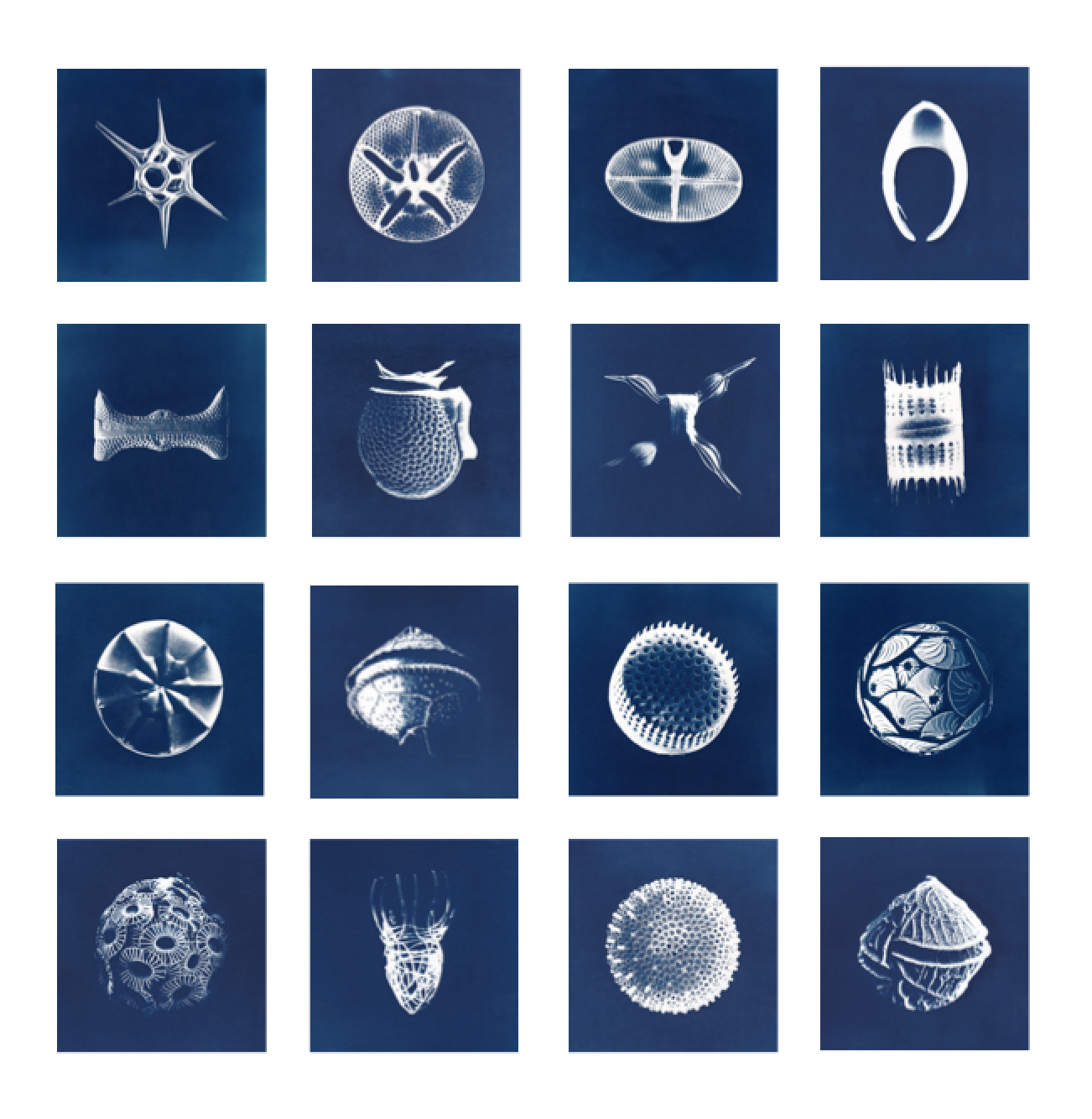Icons of the Ocean – Cyanotype prints by Inga Lisa Middleton
With this series, Inga Lisa highlights the plight of some of the world’s most endangered ocean species.
She has chosen a format in the shape and likeness of traditional religious icons to emphasize these creatures’ preciousness. She portrays them not as broken or in distress, but to shows them looking directly into the camera lens looking strong, beautiful, and unique - as they should be.
“Today, our oceans face many threats including plastic pollution, over-fishing and global warming forcing many of its creatures to the brink of extinction.
The world is a single interconnected organism, as Alexander von Humboldt, a 18th-century scientist and explorer, stated. This vision is the concept of nature as we know it today: everything, to the smallest creature, has its role and together makes the whole, in which humankind is just one small part. The ocean covers 71% of our planet, and has crucial roles such as maintaining climate equilibrium, and oxygen production: not only the trees produce the oxygen we breathe, but our oceans are at least as important for producing healthy air.
The International Union for the Conservation of Nature’s Red List has assessed around 85,000 species of which almost 25,000 face extinction. According to the World Wildlife Fund, Living Planet Report 2016, loss and degradation of habitat and climate change are the main threats for the loss of species. As the rate of extinction is going at a faster speed than ever before, understanding the reasons for the decline of animal and plant species is essential to protect them and the future of human life.”
Chiara Lapucci, National Research Council IBE (Institute of BioEconomy) - LaMMA Consortium, Italy.
Galapagos Penguin
There are fewer than 600 breeding pairs alive today.
Original Photograph : Nilanjan Bhattacharya
Whale Shark
The distribution of whale sharks indicates the presence of plankton and the overall health of our oceans. Demand for their meat, fins and oil remains a threat to the species, particularly by unregulated fisheries.
Original Photograph : Krzysztof Odziomek
Humphead Maori Wrasse
Highly vulnerable to overfishing because it’s a valued luxury food as a part of the live reef fish trade predominant across Southeast Asia.
Original Photograph : Tanya Puntti
Hawsbill Turtle
Though widely distributed, they are critically endangered, with an estimated population of fewer than 25,000 nesting females.
Original Photograph : Tanya Puntti
Hector’s Dolphin
Scientists estimate that there were about 30,000 Hector's dolphins in the 1970s. Now there are just over 7,000.
Original Photograph : Chalita Klumjui
Beluga Whale
Despite not being threatened overall, sub-populations are listed as critically endangered and fae increased mortality from human actions.
Original Photograph : Christopher Meder
Hawaiian Monk Seal
There are only about 1,400 left in the world and their population is about one-third of historic levels.
Original Photograph : David Fleetham/OceanwideImages.com



























